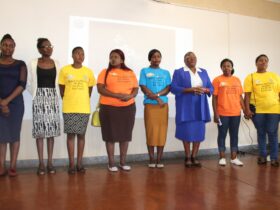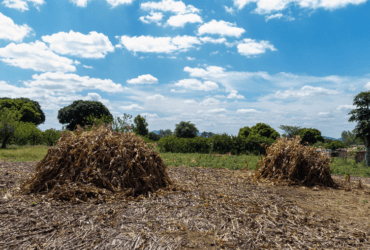A case of aquaponics skills by Silveira House
Zimbabwe has largely been in the throes of food insecurity for close to a quarter
of a century, since 2000. More attention and focus on food strategies and
interventions have largely targeted rural folk, deservedly so, but paid lip service
to urban food vulnerabilities. Urban food systems have largely been thought of
from a consumption perspective because rural areas have been thought of as the
main suppliers of the country’s urban food requirements. However, failures of
rural food production have equally jeopardized the reliance on rural food links,
and a burgeoning urban populace also means more mouths to feed.
Urban food production is difficult because of space limitations. In short, most
high-density and medium-density suburbs have little available space for people
to produce productively. Not only that, urban laws often dissuade people from
carrying out food production. However, the urge for people to eat fresh and
cheap food has driven many people to breach urban legal frameworks.
The 2018–2023 Zimbabwe Vulnerability Assessment Committee (ZIMVAC)
has highlighted how urban populations are becoming more food insecure.
Silveira House, an organization focused on promoting climate justice and food
security, installed an aquaponics system in Kuwadzana Major Park in 2023. The
park is in Kuwadzana, a low-income, high-density suburb of Harare. Under the
Re-greening the Urban Green Spaces in Harare (RGUGS) project, which was
funded by UNDP GEF, we trained young people to install and operate
aquaponics systems. Passers-by can visit the park and learn about aquaponics to
inspire them to install them at their homesteads. Thus far, the park has been
rehabilitated, and thousands of people now frequent to look and learn about
aquaponics systems.
In light of this challenge, aquaponics offers an option to undertake farming in
small spaces. What is aquaponics? In short, aquaponics entails bringing together
fish and plants, whereas aquaculture is the growing of fish in a confined
environment and hydroponics is the growing of plants in a soilless environment.
Some of the advantages of aquaponics are that it is water efficient, does not
require soil, limits weeding, requires limited use of pesticides, uses fish waste as
fertilizer for plants, requires less water, and promotes environmentally friendly
production.
Aquaponics can be carried out in small and large environments.
Addressing urban food system challenges requires all of us to rethink and
reconfigure our small spaces for increased production. We also need to extend
skills, especially technical skills, to urban people, who have largely been
shunned by food-related skills initiatives. Equally, the young people trained by
Silveira House are now able to use the skills to install aquaponics systems for a
fee, thereby boosting their incomes and livelihoods
By David Bote, Project Lead, Silveira House Climate Justice and Food
Security..










Leave a Reply